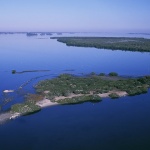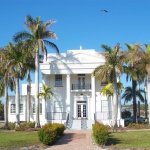Almost every major city in the world has that one visionary who’s responsible from turning it from an unimportant place to the center of culture and economic activity. Barron Gift Collier was such a person. Without him, Everglades City would have taken longer to develop, if at all. This article was written to celebrate the man’s legacy; a legacy that is evident even to this day making Baron Gift Collier a true ‘gift’ to the blessed city of Everglades.
Barron Gift Collier was born in Memphis, Tennessee in 1873. He began working very young to help provide for his family, especially since, like most rich Southern families, they lost everything during the Reconstruction period. Collier showed panache for charity as well as entrepreneurship at a very young age. Such that, after working and excelling in his work for the Illinois Central Railroad, he used some of the money he earned towards obtaining a contract with the City of Memphis to help the city install gas lights. He soon purchased a printing plant, and expanding his entrepreneurship skills around the country, building trust among his peers and making the necessary connections. He then purchased properties in Memphis, Little Rock, New Orleans, and in New York City. His wealth continued to grow overtime as he traveled around the world which eventually enabled him to acquire his first million dollars (a much more enormous sum at that time) by the time he turned 26.
Barron Collier first arrived in what is now Everglades City in 1921. Collier fell instantly love with the gorgeous scenery, and, being the businessman that he was, saw the potential prospects of expanding his business ventures in the area. His first venture was to purchase the former Storter estate, which later became known as the Rod and Gun Club. The Rod and Gun Club eventually became a major vacation resort for the rich and famous who wanted to hunt and explore the Everglades and is still in operation today. However, Collier didn’t stop there.
A time came to pass when the Florida state ran out of money for a major highway road construction that would connect Naples and Dade County. Collier, then, stepped in and offered to help fund the construction under the condition that his property holdings, already sizable at that time, should obtain county status. The state agreed and Collier lived up to his word. Today this highway is named the Tamiami Trail which covers 275 miles of concrete and made the transportation of trade and goods as well as citizens much more convenient and thus became vital to the region’s progress.
Collier soon moved all of his corporate work down to Everglades City. He also had constructed several buildings to serve his employees. This included a laundry building, a bank, a post office and telegraph, bakery, the Everglades Inn, administration offices, a department store, a pharmacy and a restaurant. Eventually, special residences were constructed to house all of his workers, in addition to a City Hall, which would serve as the house for the county seat. All of these buildings were constructed between the years of 1923 to 1928. Anyone who worked for the Collier Corporation didn’t have to pay a dime to use any of the buildings; instead, the services at the laundry building, the bakery and other establishments were a part of their pay.
The legislature of Florida kept their word and Everglades City soon received the county seat in 1923, and was named after Collier. However, the Everglades wouldn’t receive the title as a city in 1953, when Collier’s sons decided to encourage local independence and autonomy. As a result, residents were allowed to purchase their houses, and Everglades City began to function as an independent city within Collier County, rather than a privately owned city that governed Collier County.
Barron Collier died in 1939; however his legacy lives on and is enjoyed by locals and visitors alike. This is because some of the buildings from Collier’s time still exist in Everglades City to this day. This includes the laundry building (now part of the Museum of the Everglades), the Rod and Gun Club, City Hall (which still functions as a local government office to this day), and the Bank of the Everglades (which is now a bed and breakfast spa). What began as an undeveloped marshland, that he turned into a small experimental corporate town that was made to his employees’ benefit, became one of the hottest tourist spots of the country today, where bio-diversity and human progress co-exist in harmony. The city owes a great debt to the vision of Collier. If it were not for him, southwest Florida’s history would have been very different.










